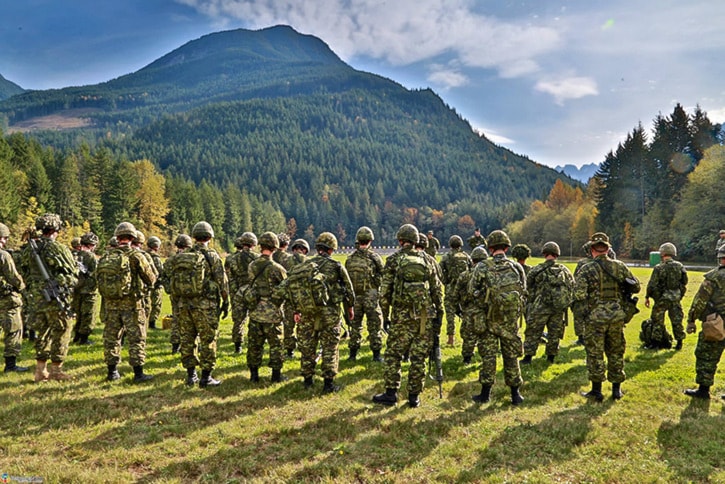Moira McColl
Special to The Morning Star
Have you ever wondered what would happen if Canada was suddenly involved in a war? Who would defend us?
This was a concern for citizens of Vernon back in 1884 when they first petitioned the Canadian government for a militia unit. But the young Dominion of Canada was fighting the Northwest Rebellion and paying for the recently constructed Canadian Pacific Railway, so no resources were available, leaving the vast area between Calgary and Vancouver without military protection.
With the return of veterans from the Boer War, there was more interest in a local militia and in 1911 the 1st Regiment British Columbia Horse was authorized, becoming the roots of the present-day British Columbia (B.C.) Dragoons.
According to the Merriam-Webster dictionary, a dragoon is “a soldier, especially in the past, who rode a horse and carried a gun.” The term originated in France in the early 17th century and described the muskets used by the soldiers as “breathing fire.”
B.C. Dragoons commanding officer Lt.-Col. Mike McGinty explains that within Canada there is a small number of army bases with operational units scattered across the country.
“There are no regular army units in B.C., only reservists,” he said. “The Canadian Armed Forces is responsible for the safety of Canadians at home and abroad and the reserve has a key role in providing an armed forces presence across the country.”
The army reserve of the Canadian Armed Forces consists of more than 18,000 troops.
Vernon has a military history that stretches back for more than a century.
Calvary and infantry militias began training in Vernon in 1912.
By 1916, during the First World War, there were more than 7,000 soldiers training at the Vernon Military Camp, dwarfing the City of Vernon, which then had a population of around 3,000 people.
Approximately 700 Vernon residents volunteered for active duty in the First World War. The unit fought in France and the Flanders region of Belgium. Of the 4,500 men who served in the unit, 732 were killed and 2,276 were wounded.
In 1940, the B.C. Dragoons began training as a mechanized unit in preparation for active combat during the Second World War. However, equipment shortages were a major obstacle. At the outbreak of the war, Canada had fewer than a dozen tanks. The unit was transferred to Victoria, then Camp Borden in Ontario, and finally to England for training before heading into combat in Italy in 1943, and finishing the war in the northeast corner of the Netherlands.
During the war, the B.C. Dragoons suffered 289 casualties.
In 1946, the B.C. Dragoons resumed its status as a reserve armoured regiment. Since then, they have provided individuals or sub-units to UN and NATO operations. More recently, numerous B.C. Dragoons members have served in Afghanistan.
“We are here. We have been here for over 100 years,” said McGinty. “We are training soldiers to be ready for active duty. Armed forces are important to Canada and there is always space for you to join.”
Today the B.C. Dragoons, a primary reserve armoured reconnaissance regiment based in Vernon and Kelowna, has a proud history and a continuing vital role. The horses and muskets have been replaced by highly capable reservists trained on military vehicles and always ready when called upon to help with domestic disasters or to fight along with the Canadian Armed Forces abroad.
Approximately 100 reservists train regularly on Wednesday evenings and one weekend a month at either the Vernon Army Cadet Training Centre or the Lawrence Avenue Armoury in Kelowna. In the summer, they attend brigade-wide training sessions in other locations.
“The vast majority of local reservists are fully employed in other jobs or in full-term studies,” said Col. Nigel Whittaker, B.C. regional liaison officer. “The military always has to be prepared to fight and there is a strong commitment to train these soldiers.”
A primary role for Whittaker is to promote the value of reservists and help enable them to function well in their civilian life while also being able to participate in their voluntary role as reservists.
Whittaker also wholly supports the Okanagan Military Tattoo (OMT).
“It’s a way to remind Canadians of our military heritage and celebrate it,” he said.
The Regimental Pipes and Drums of the B.C. Dragoons, a compilation of musicians from the five local pipe and drum bands, will proudly carry the pennants and coat of arms of the B.C. Dragoons during the Okanagan Military Tattoo July 23 at 7 p.m., and July 24 at 2 p.m. at Kal Tire Place.
This year’s theme is West Meets East, with a diverse lineup extending from the popular Calgary Stampede Band of Outriders to the Korean Traditional Military Band, along with pipe, drums, and traditional military bands, local Ukrainian dancers and more. The public is invited to visit the various displays including the information booth for the B.C. Dragoons before and after the shows. For more information or to purchase tickets visit okanagantattoo.ca.
